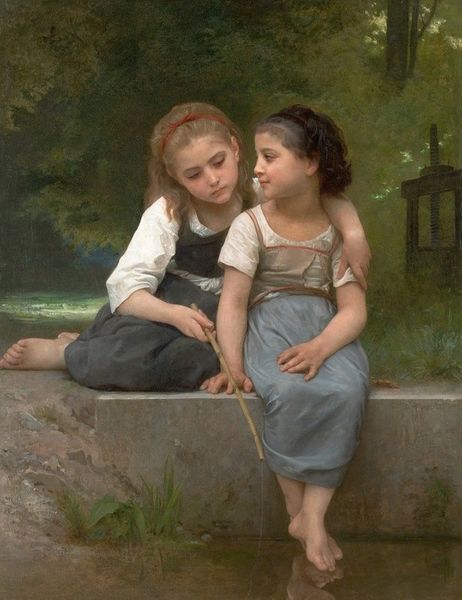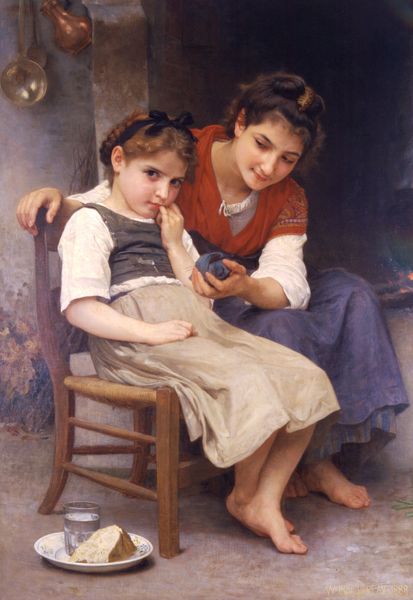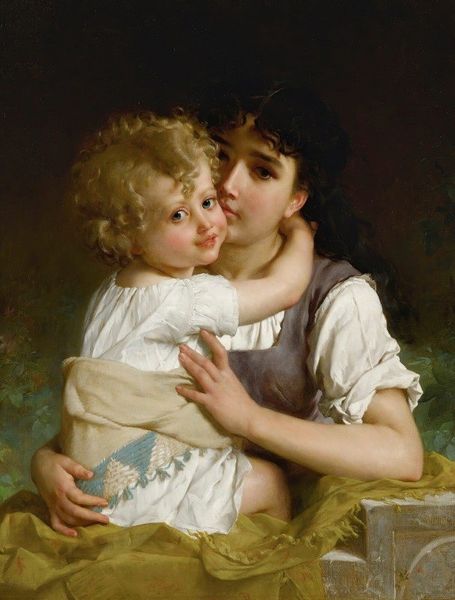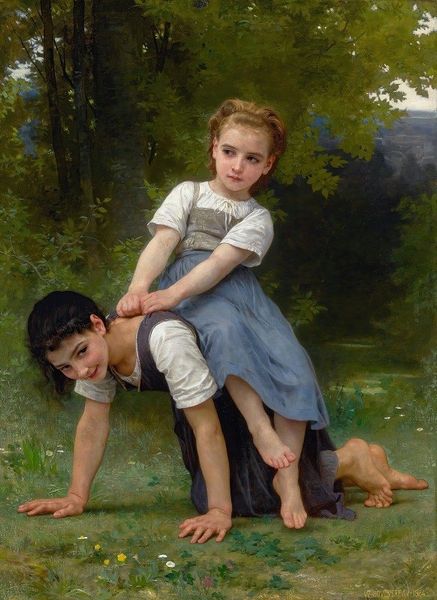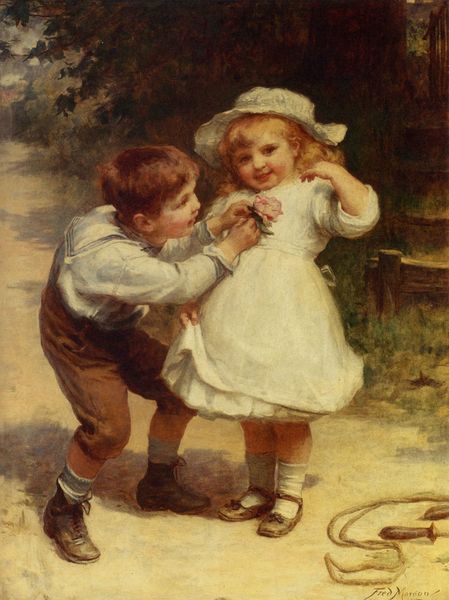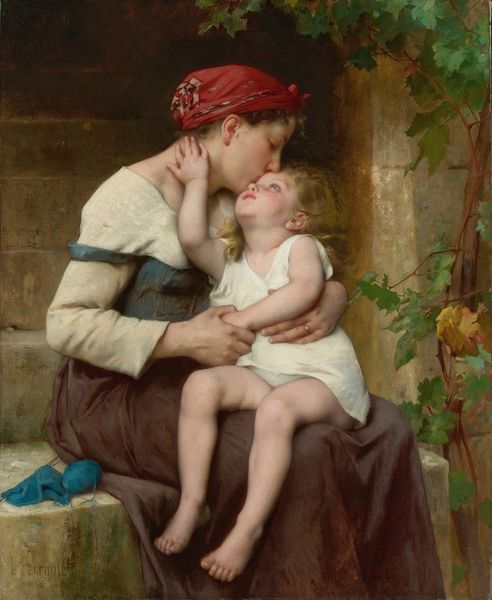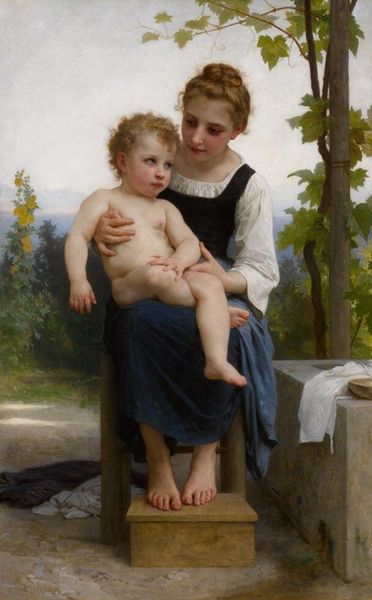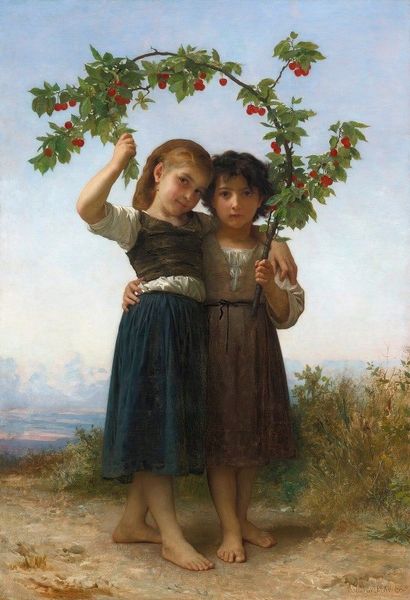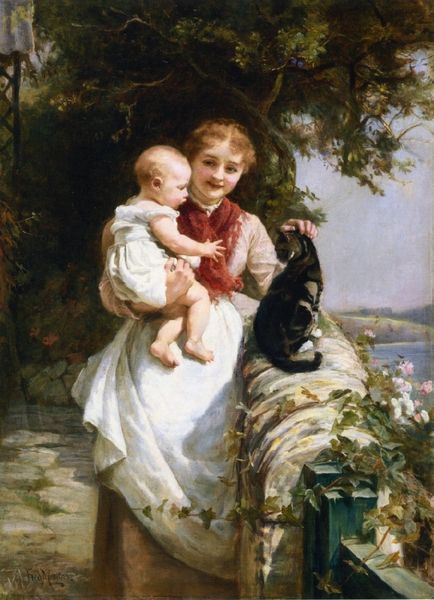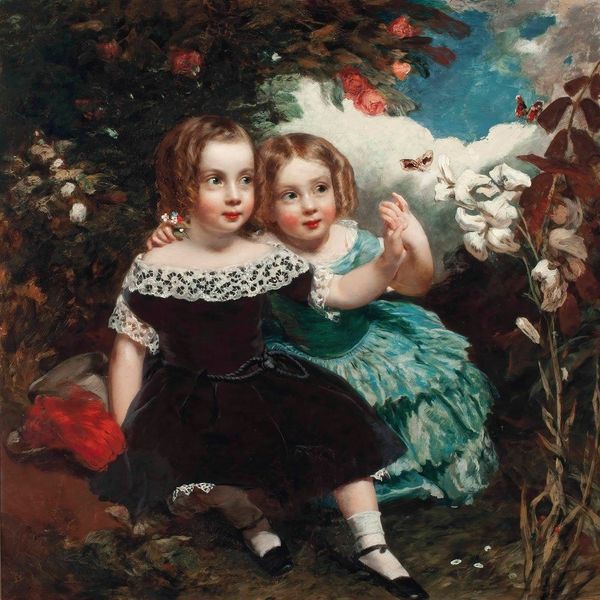
Copyright: Public Domain: Artvee
Editor: Émile Munier’s "La Jatte de Lait", created in 1881 using oil paints, evokes a feeling of idealized innocence. I’m particularly drawn to the figures’ placement within the landscape, it seems very deliberate, almost staged. What do you see in this piece from a historical perspective? Curator: This painting speaks volumes about the burgeoning Romantic movement and its portrayal of childhood. It’s not simply a sentimental image, but a conscious construction. Think about how industrialization altered societal views, creating nostalgia for an imagined rural past. This work participates in, and helps construct, a romanticized view of the rustic idyll and of youthful innocence untouched by the realities of urban life. Editor: So the idyllic nature and the focus on children aren't necessarily organic, but serve a particular function? Curator: Exactly! Consider the rise of genre painting and the art market. These kinds of images of happy children in the countryside sold incredibly well. They were consumed by a growing middle class who were also undergoing the anxieties associated with modernity. Can we really separate art from socio-economic forces when it's so intertwined? The sentimental scene provides an appealing contrast to the harshness of daily life that many people experienced in industrialized urban centres at this time. Editor: That reframes the image entirely. It makes me wonder how art shapes public perception versus simply reflecting it. I've learned that beyond aesthetic value, this painting functioned within the context of social ideals and economic realities. Thank you. Curator: And perhaps by exploring images such as these, and discussing the relationship between image-making, artistic intentionality and societal trends, we will both begin to have more profound discussions about art in general.
Comments
No comments
Be the first to comment and join the conversation on the ultimate creative platform.

